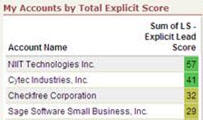 I recently read an interesting book on predictions - things like weather, economics - called "Apollo's Arrow" by David Orrell. In the book, he talks about a number of challenges to accurately predicting future events. There are many challenges, but foremost among them are the data you use as a starting point, and the model you have for how events will unfold.
I recently read an interesting book on predictions - things like weather, economics - called "Apollo's Arrow" by David Orrell. In the book, he talks about a number of challenges to accurately predicting future events. There are many challenges, but foremost among them are the data you use as a starting point, and the model you have for how events will unfold.In predicting the weather, for example, a three dimensional grid of temperature, pressure, and humidity values is constructed as a starting point. From here, various computer models attempt to forecast how weather patterns, temperatures, rain, and wind will occur. The resulting predictions (unfortunately still very inaccurate) are challenged by both the inaccuracy of the starting points and the model used to predict an outcome.
Interestingly, an individual model can vary greatly in its ability to predict different outcomes. Temperature may be relatively well predicted, but rain may be no better than guesswork.
In reading the book, I was reminded of marketers' challenges in using lead scoring to predict which leads are good enough to be passed to sales. We have similar elements; the underlying data - in our case digital body language - on the prospect's activities, and the model we use to score leads and determine which is a qualified lead.
 This is interesting though in that we are looking at one individual and deciphering their intention to purchase. However in B2B marketing it is a business that purchases, not an individual. Much like predicting temperature vs predicting rain, one aspect of the buying process prediction that often leads to very accurate results is predicting the business that will buy, rather than the individual. Looking at the businesses visiting your website gives very intreresting clues as to where a vigorous buying process is happening.
This is interesting though in that we are looking at one individual and deciphering their intention to purchase. However in B2B marketing it is a business that purchases, not an individual. Much like predicting temperature vs predicting rain, one aspect of the buying process prediction that often leads to very accurate results is predicting the business that will buy, rather than the individual. Looking at the businesses visiting your website gives very intreresting clues as to where a vigorous buying process is happening.If you see multiple visitors on your website from one company, they are doing deep investigation, and are using compelling search terms when finding you on Google, you know that there has likely been an internal event at that organization that has caused a group to begin investigating your solutions.
 Of course in this scenario, you may or may not know the individual who will guide the final purchase decision. If you do know most of the key members of the team who would be involved in a buying decision, you just need to present to your sales team with the information that the business in question is clearly showing buying signals. You can do this through building account traffic light dashboards in your sales team's CRM system, or other sales enablement techniques.
Of course in this scenario, you may or may not know the individual who will guide the final purchase decision. If you do know most of the key members of the team who would be involved in a buying decision, you just need to present to your sales team with the information that the business in question is clearly showing buying signals. You can do this through building account traffic light dashboards in your sales team's CRM system, or other sales enablement techniques.However, if you don't know the key individuals who would be the decision makers on a purchase of your solutions, you can focus your efforts on what you do know - that a buying process is under way at that organization. Knowing that, a role-based discovery service such as Reachforce can easily capture the names you require and get your sales team in touch with them.
Much like predicting the weather, predicting buying behavior can be challenging and imprecise. However, even being able to predict key indicators like the fact that a buying process is underway at a specific organization adds tremendous value to your sales team.















0 komentar:
Post a Comment